I love rock in the garden, but I particularly love gravel and other small rocks. I work them into nearly every design I create for my clients, as well as in my own landscape. Why the love affair with gravel? It serves many purposes, from solving drainage issues to lending textural appeal; it crunches under your feet; and it comes in many different colors and forms. Check out my favorites and see which one will work for you in your landscape.
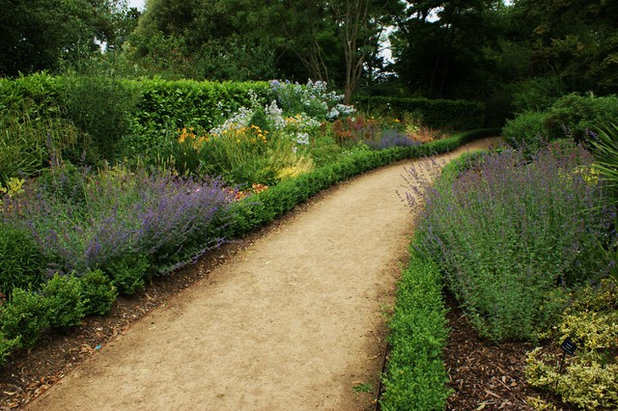
www.KarlGercens.com
Decomposed Granite
The basics: Decomposed granite, or DG, is a granitic rock that has weathered to the point of breaking into very small pieces and silt-like particles. It comes in a reddish-tan color that will fade to a lighter tan over time. Decomposed granite is ideal for pathways and rustic patios, and can also be used as a topdressing around arid plants. It's sold by the cubic yard.
Cost: DG is sold by the bag for around $3 if you simply need to add to or fill in a small area, or by the cubic yard for $35 to $50. One cubic yard (a 3-foot cube) will fill the back of a standard pickup truck.
Advantages: It's relatively inexpensive and readily available.
Disadvantages: It can track inside on the bottom of your shoes, so if you have hardwood floors, you might want to take your shoes off after walking on a DG pathway. It's also difficult to remove weeds when they get out of control.
Special considerations: It's best to apply it in thin layers, watering down and tamping each layer to create a very compact surface. You can also add a
stabilizer (a water-activated binder) to the decomposed granite area, which protects the DG from the damaging effects of traffic and weather while still allowing it to be permeable.
Maintenance: You may consider installing a contractor-grade landscape fabric underneath your decomposed granite area to discourage weeds from growing, but be aware that weed seeds can still blow in from above. Stay on top of weeding by hand pulling or by carefully using an organic herbicide. DG will break down into the soil after a number of years, so you may find it necessary to add to your patio or walkway to keep it looking fresh.
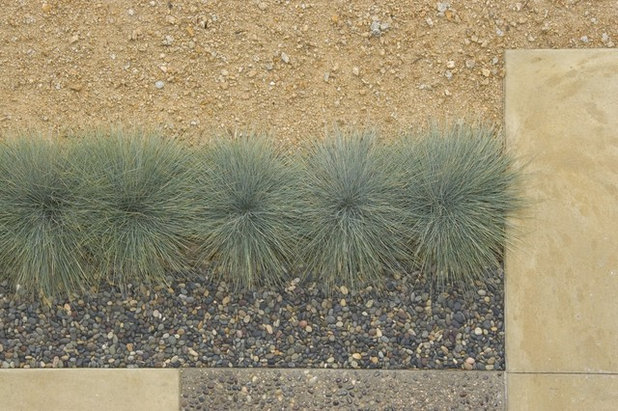
Jeffrey Gordon Smith Landscape Architecture
Here's a mix of decomposed granite (top) and pea gravel (bottom), separated by a line of blue fescue (
Festuca glauca).
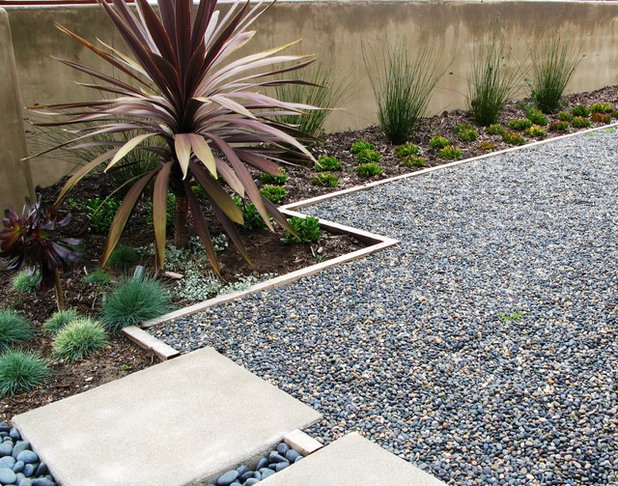
debora carl landscape design
Pea Gravel
The basics: Pea gravel is a small, rounded rock that got its name because the rocks are about the size of a pea. In reality pea gravel comes in different sizes — 1/4 inch, 1/2 inch and 5/8 inch are common sizes. It typically comes in a range of tan, brown and white color mixes, but do your homework to learn the cost of each. Use pea gravel for patio areas, pathways and filling in between flat rock, like flagstone.
Cost: Pea gravel is sold by the bag for around $3 or by the cubic yard for $33 to $50 and up.
Advantages: Most kinds are fairly inexpensive and readily available.
Disadvantages: It can be difficult to push a lawn mower or any wheeled equipment over a gravel path, as the wheels tend to sink into the gravel. It can stray out of place if not properly edged.
Special considerations: There are several different types of pea gravel, and some are significantly more expensive (rainbow gravel, for example). Be sure you know the difference when you are choosing your gravel to avoid sticker shock upon checkout.
Maintenance: Stay on top of weeding so it doesn't become a maintenance issue. Pea gravel can have a tendency to stray out of its area if there's no barrier to keep it in place, and even then, it can shift to cover nearby flagstone. Keep a broom handy to sweep it back into place.
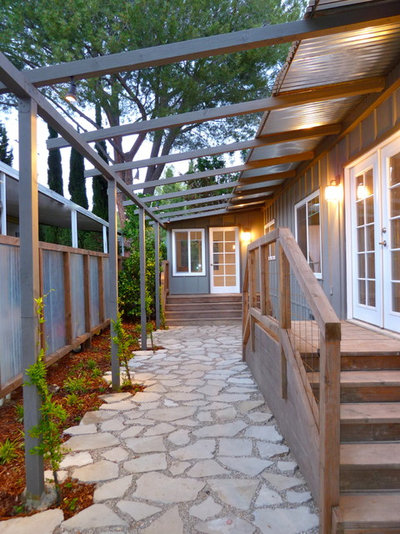
Moore About... Design
This flagstone walkway has pea gravel in the crevices.
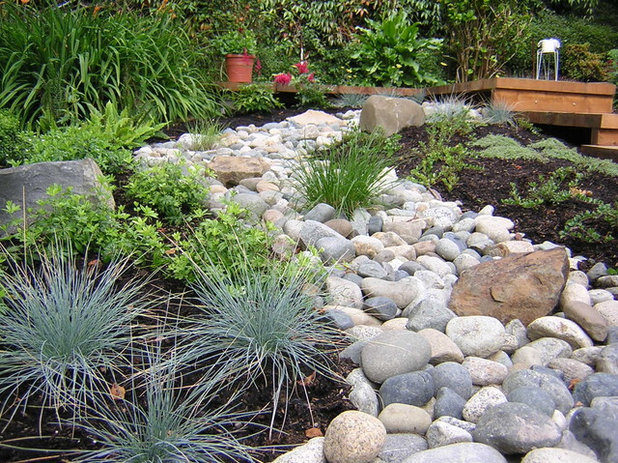
Garden Culture Victoria
River Rock
The basics: River rocks are larger than pea gravel, typically 1 inch and larger in diameter. They're available in a variety of colors, costs and sizes, and are used to create dry creek beds or to direct drainage through a property.
Cost: This type of rock is sold by the pound or by the ton. Per-pound costs range from 5 cents to 35 cents, and per-ton costs run $100 to $700, depending upon variety.
Advantages: It's readily available in different types and costs.
Disadvantages: It can be difficult to weed through this type of rock; maintenance should be consistent so you can avoid unpleasant cleanups.
Special considerations: To create a realistic-looking dry creek bed, use different sizes of river rock with some small and large boulder accents — Mother Nature doesn't limit herself to just one size rock.
Maintenance: As with other types of rock, stay on top of weeding, as once weeds get out of control, it's very difficult to remove them. Use a blower to remove seasonal debris, like fallen leaves and soil. Installing landscape fabric underneath river rock is a great way to keep this heavier rock from settling into the soil below.
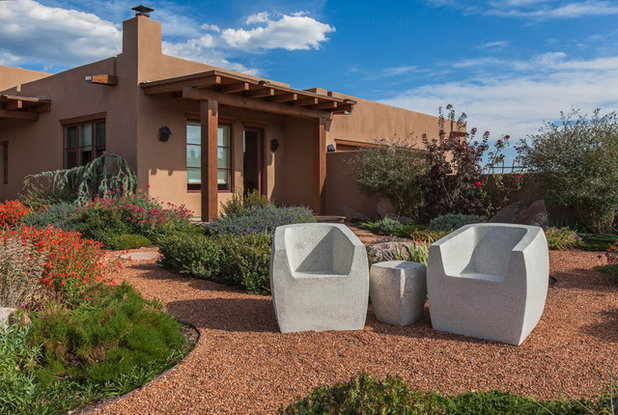
markdesign, llc
Crushed Granite Gravel
The basics: This one is closely related to decomposed granite, but it's a bit chunkier in texture and size. While DG has quite a bit of silt and almost sand-like particles, crushed granite gravel has larger particles. The texture is not smooth like pea gravel, but this choice is perfect for walkways and patios, as well as for setting off xeric plants.
Cost: Crushed granite gravel is sold by the yard for $60 and up, depending upon your location and the size. Those living in more rural areas may pay more for this material, as it's more expensive to truck in than more readily available materials like DG.
Advantages: It provides great texture in the garden, and is a step up from DG for gardeners who want a more refined or contemporary look.
Disadvantages: It can be hard to locate a source if you live in a more rural area, and it can be twice the cost of the similar but more humble decomposed granite.
Special considerations: It's similar to decomposed granite.
Maintenance: The upkeep for crushed granite gravel is similar to that for decomposed granite and pea gravel, as it has some of the same qualities as each of those materials.
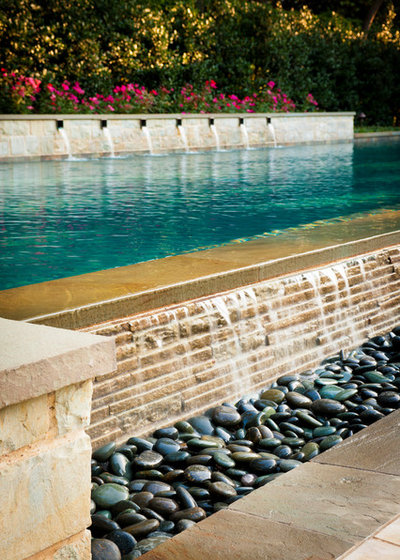
Pool Environments, Inc.
Mexican Beach PebblesThe basics: These are some of my favorite small rocks. Mexican beach pebbles are smooth and rounded and have a grayish-black uniform color. I like to use this rock decoratively in the garden — to topdress container plantings, to puddle around boulders and to line borders of patios and beds.
Cost: This material is sold by the bag for $20 and up, by the pound for 35 cents and up and by the ton for $700 and up, making it a fairly pricey option.
Advantages: It's an elegant and sophisticated rock option.
Disadvantages: It is fairly expensive and can be difficult to locate if you don't live in a large urban area.
Special considerations: With such a distinctive look, Mexican beach pebbles are ideal for contemporary or Zen-like gardens.
Maintenance: Similar to that for gravel and river rock — keep on top of the weeds and use a blower to clean up fallen debris.
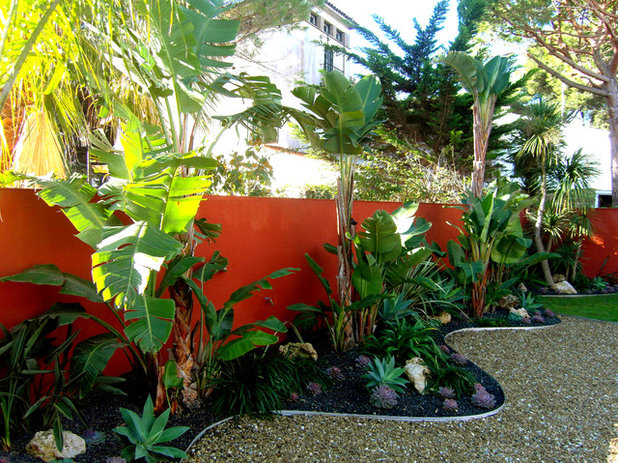
Simbiosi
General gravel notes:- Buy in bulk or by the yard, rather than by the bag, to save money.
- Always inquire about delivery fees when ordering.
- Gravels are typically available by bags at home improvement stores and by the bag, yard or ton at landscape supply yards.
- Consider installing a contractor-grade landscape fabric underneath your gravel area. It suppresses weeds and allows rain to penetrate while keeping the rock from sinking into the ground. There is some conversation among gardeners about the efficacy and value of this fabric, and although I have always found it helpful, I encourage you to read up about the pros and cons before making your decision.
Shown: A pea gravel patio bordering a tropical garden





